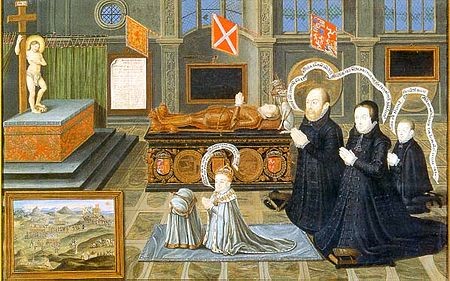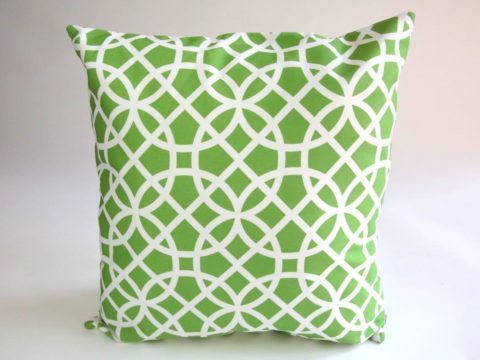Scottish Peers
Chapter 6 : Earls (Home - Lennox)
There were two distinct types of Earldoms – those which originated from the Mormaers of the ancient kingdoms that made up Scotland north of the Firth of Forth, and those granted by kings, although by the late fifteenth century the term Earl was used for both. The old mormaerdoms were ‘comital’ that is, they relate to specific geographic territories and were not just titles. Later earldoms might be comital, or just titular. The earldoms below are only those which were created prior to 1625.
Home
The earldom of Home (pronounced Hume) was created in 1605 for Alexander, 6th Lord Home. The 1st Lord Home, Alexander, was created a Lord of Parliament in 1473. He was succeeded by his grandson, Alexander, 2nd Lord Home, who supported Prince James at the Battle of Sauchieburn. Following the Prince’s recognition as James IV, Home became a Privy Councillor, which led to some rivalry with the Earl of Angus. He was the Scottish Warden of the Middle and East Marches, and thus responsible for keeping peace in the border with England – a close to impossible task.
His son, 3rd Lord Home, was one of the Scottish commanders at the Battle of Flodden. He achieved early victory in his section of the battle but was blamed for withdrawing his men too soon, which contributed to the massive defeat suffered by the Scottish army. Home initially supported the appointment of the Duke of Albany to be Governor of Scotland during the minority of James V. However, when he met Albany in person, he took offence at some remark of the Duke’s, which led him to support the Queen Dowager, Margaret Tudor, in her bid to maintain the Regency, which she had lost following her second marriage to the 6th Earl of Angus. He communicated secretly with the English and accompanied Queen Margaret when she fled to England in 1515.
Albany captured Home Castle and imprisoned Lord Home who persuaded his jailer, the Earl of Arran, (who happened to be his brother-in-law), to join him and the Earl of Angus in insurrection in the borders. Promised a pardon by Albany, he surrendered at Holyrood House and was beheaded. The 4th Lord Home was fatally injured in a skirmish related to the Battle of Pinkie. His son was captured at the same time and taken to England as a hostage and his wife was forced to hand over Home Castle to the English. On the return of the 5th Lord from England he recaptured the castle.
Initially a member of the King’s party, following the deposition of Mary, the 5th Lord changed sides and was one of the garrison besieged in Edinburgh Castle until 1573. Dying two years later, he was succeeded by his son, who was put into the guardianship of the Commendator of Jedburgh. This led to disputes between Home’s mother and his guardian, over lands and the occupation of Home Castle. The Homes had long been rivals of the Hepburns, Earls of Bothwell, and this led to feuding during the reign of James VI.
Home was a Catholic, but in 1594 subscribed to the Confession of Faith that prescribed how Christianity was to be practised in Scotland. He was close to James VI and accompanied him to England in 1603. He became a Privy Councillor and was granted the earldom of Home in 1605. He died in 1619 and was succeeded by his son, the 2nd Earl. The current holder of the earldom is David Douglas-Home, 15th Earl, whose father, Sir Alec, was Prime Minister of Great Britain 1963 – 1964.
Lauderdale
This is the last earldom to be created in the peerage of Scotland before 1625. It was bestowed upon John Maitland, 2nd Lord of Thirlestane. The Maitlands first came to prominence in Scottish politics in the 1560s when John Maitland, 1st Lord of Thirlestane, was Lord Chancellor and his brother, Sir William Maitland, was Secretary to the Queen Regent, Marie of Guise, and then to Mary, Queen of Scots. The 1st Lord, like his brother, was a close associate of the Regent Moray. Following Moray’s assassination, both Maitland brothers joined the Queen’s party and were besieged in Edinburgh Castle until 1573. After its surrender Maitland remained under arrest until 1575 when he was pardoned.
Maitland was reappointed to the post of Keeper of the Privy Seal, which he had held in the last days of Mary’s rule. He became a Privy Councillor and Secretary in 1584 and then Lord Chancellor. He was close to James VI and accompanied the King on his voyage to Denmark to collect his bride, Anne of Denmark. He died in 1595 and was succeeded by his son, John Maitland, 2nd Lord, who was promoted to the earldom of Lauderdale and was a strong supporter of the Parliamentarians during the wars of the three kingdoms. The current earl, the 18th, is Ian Maitland.
Lennox
The earldom was probably created for David, brother of King William the Lion (c. 1143- 1214), but in the early 1200s was held by a Gael, Ailin.The earldom descended by 1425 to Isobel, Countess of Lennox. She was pre-deceased by her four sons and had no legitimate grandchildren so the earldom lapsed. It was recreated for Sir John Stewart of Darnley, the grandson of Countess Isobel’s sister, Elizabeth, whose husband, having fought extensively for France in the Hundred Years War, had been granted the French lordships of d’Aubigny and Concressault.His son, (father of the 1st Earl) resigned these titles to his younger brother, and returned to Scotland but the Scottish and French branches of the family remained close.
The 1st Earl remained faithful to James III, who had granted him his title, but this did not endear him to James IV, who had rebelled against his father. The 2nd Earl was killed at Flodden, and the 3rd was murdered during the fractious minority of James V, by James Hamilton of Finnart. This led to an ongoing feud between the Hamiltons and Lennox Stewarts.
The 3rd Earl’s sons sought safety in France after their father’s death, with their d’Aubigny cousins. The 4th Earl, Matthew Stuart (he adopted French spelling) returned to Scotland in 1543, initially in support of Marie of Guise and the French alliance, in opposition to the Hamilton Earls of Arran, who supported the English alliance. When the Hamiltons changed sides, so did Lennox, joining the English faction, led by the Earl of Angus, whose daughter, Lady Margaret Douglas, he married.
Lennox and Margaret were the parents of Henry Stuart, Lord Darnley, second husband of Mary, Queen of Scots. The 4th Earl became Regent for his grandson, James VI, but was assassinated in 1571. The title then merged with the Crown, but was regranted to Darnley’s younger brother, Lord Charles Stuart. Lord Charles’ daughter, Lady Arbella Stuart, was not permitted to inherit the title, which passed to Robert, younger brother of the 4th Earl. In 1580, Robert resigned it in favour of his nephew, Esme, whose descendants held it until 1673. It was recreated as a Dukedom for the illegitimate son of Charles II, whose descendants hold it today, together with the Dukedom of Richmond.






